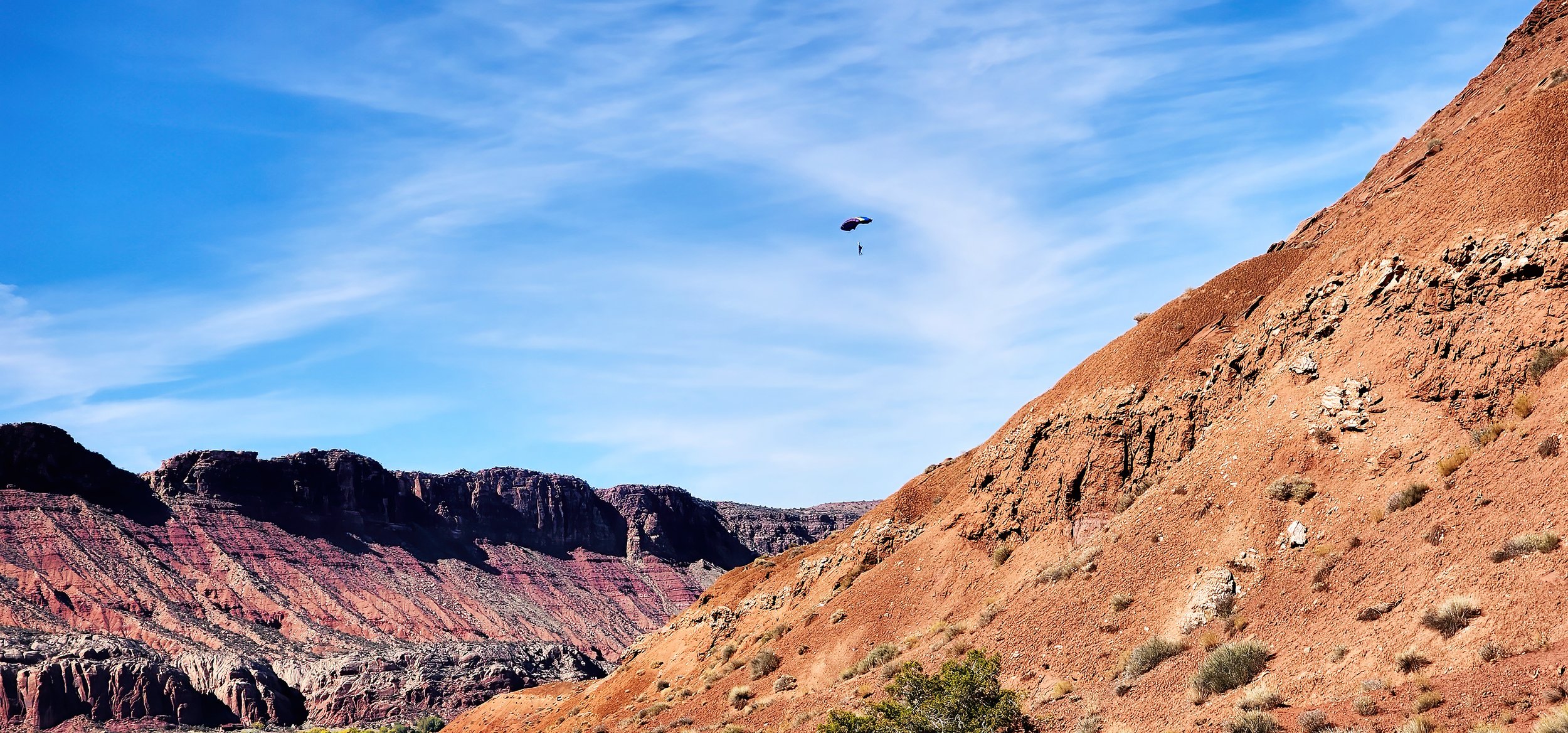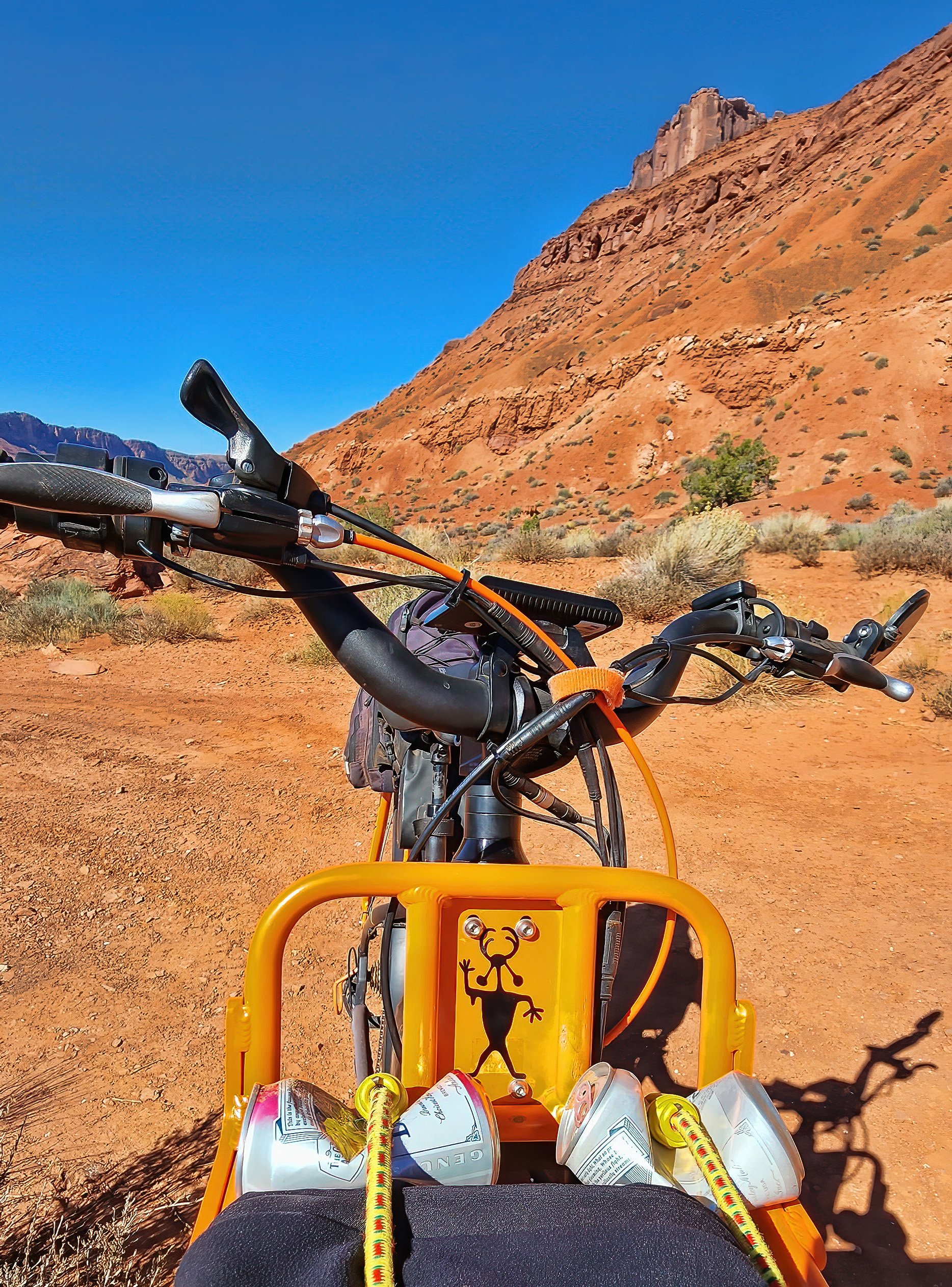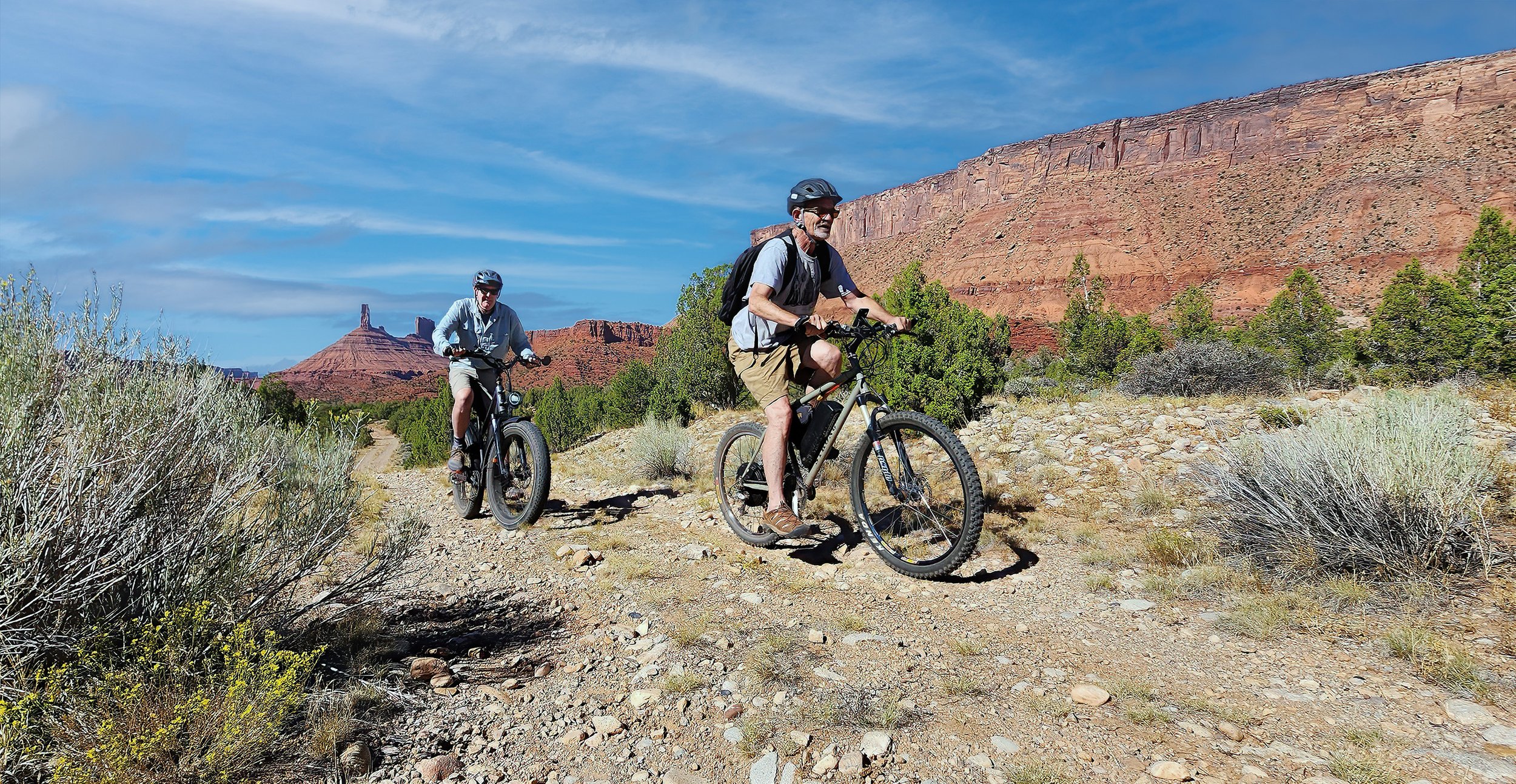the feeding stations from a lofty perch, taking note of the abundant finches and sparrows on the buffet. I’m anticipating this one will be a regular visitor through the winter season.
Sharp-shinned Hawk (Accipiter striatus).
the feeding stations from a lofty perch, taking note of the abundant finches and sparrows on the buffet. I’m anticipating this one will be a regular visitor through the winter season.

Sharp-shinned Hawk (Accipiter striatus).
with the jays that are now frequently visiting my feeding stations.

Pinyon Jay (Gymnorhinus cyanocephalus).
was slow to dissipate today, but ultimately revealed Castleton Tower during my afternoon ride.


fell overnight in Castle Valley. More rain continues to fall into the day, eventually turning to sleet/hail/snow, but no catastrophic flooding has occurred.

UPDATE: A total of 1.6 inches (41 mm) of rain fell in this first winter storm of the season. An outstanding start to the water year.
in the canyon lands and I managed to catch somebody leaping off of Parriott Mesa.


is one of my favorites in the area, and during breeding season in the spring it broadcasts a pleasant song.

Spotted Towhee (Pipilo maculatus).
on my recently refurbished RadRover 5, now approaching 4,300 miles (6,900 km). The vinyl explorer is seen below, with aluminum cargo found discarded along the road.

We’ve had a week of stunningly beautiful days. Here’s the view today, at high noon, looking south from the base of Parriott Mesa.


My Trek Firefly eMTB continues to be super fun and now registers 1,091 miles (1,756 km) on its digital odometer.
of light through water droplets is gorgeously and dramatically illustrated this evening by this full rainbow over Castle Valley, Utah. Wow.
Click on image to enlarge.
to the remaining high desert pollinators by the tiny broom snakeweed and much larger rubber rabbitbrush, the last remaining flowering plants this season. They’re both quite lovely right now.

Rubber rabbitbrush (Ericameria nauseosa (formerly Chrysothamnus nauseosus)).

Broom snakeweed (Gutierrezia sarothrae).
that occur in the region’s sandstones are, as believed by some, excavated by the extremely rare and endangered Diamond-billed Rock Pecker. They remain elusive to this bird photographer and so a drawing will have to suffice.


Save the Pecker! This sticker is available at Moab Motorsports.
Geologists, on the other hand, would suggest that the eroded pockets are a product of chemical weathering by dissolution of the binding cements in the sandstone, with the wind sweeping out the grains, slowly through time. That seems to be the working explanation elsewhere.
found clinging to an old bicycle tire headed for recycling.

Fully grown plateau fence lizard (Sceloporus tristichus) about three inches (eight centimeters) long.
make off with a dead rock squirrel, caught in the act by the all-seeing eye of a trail camera.

Kit foxes (Vulpes macrotis).

A curious coyote (Canis latrans) late to the party.
raises its stinky black-capped head in a matter of hours, triggered by recent heavy rains and today’s warming sunshine. Several of these odd fruiting bodies have emerged over the last six hours. Flies love the putrid odor.

Stinkhorn fungus (Phallus impudicus), also known as prickle mushroom for some reason.
Pinyon Jay, who seems happy to hang out at my oasis all day, rather than traveling with the raiding flock.

Pinyon Jay (Gymnorhinus cyanocephalus).
preceded a huge squall that just passed through Castle Valley. Look closely, there’s a hint of a double rainbow in the image. Sublime.

in the high country in the La Sal Mountains of southern Utah. It’s been a stormy day in Castle Valley.

Mt. Waas (elevation 12,306 ft / 3,751 m) and Manns Peak (12,272 ft / 3,741 m), left and right, respectively. That’s the summit of Round Mountain in the lower left.
smile on Castle Valley at high noon.
The Sun sits directly above Round Mountain in this view from one of my favorite perches. (Click on image to enlarge.)

at my feeding stations are these attractive but very annoying jays, whose perfectly timed raids occur after I fill the feeders.
Pinyon Jay (Gymnorhinus cyanocephalus). Click on image to enlarge.
While the most melodic at the feed trough is this sparrow, about the size of a Robin.

Spotted Towhee (Pipilo maculatus).
in Castle Valley with my two neighbors. Endless big fun on our eMTBs.



as experienced at the Potash Road petroglyph panels near Moab, Utah.

First morning light flares through a gap in the jointed sandstone on the opposite side of the Colorado River.

Direct rays of the rising Sun are strongly controlled by the jointed terrain to the southeast, limiting the places where the cliff is first illuminated along the Potash Road.

Another view showing the rising Sun’s rays striking the sandstone escarpment along the Potash Road at the equinox. Terrain models are from Photo Ephemeris website, a planning tool I use for astrophotography.

My long shadow projected on a fully lit panel around 7:30 am MDT.

Rock art expert Rory Tyler at one of the many small petroglyph sites along the Potash Road.